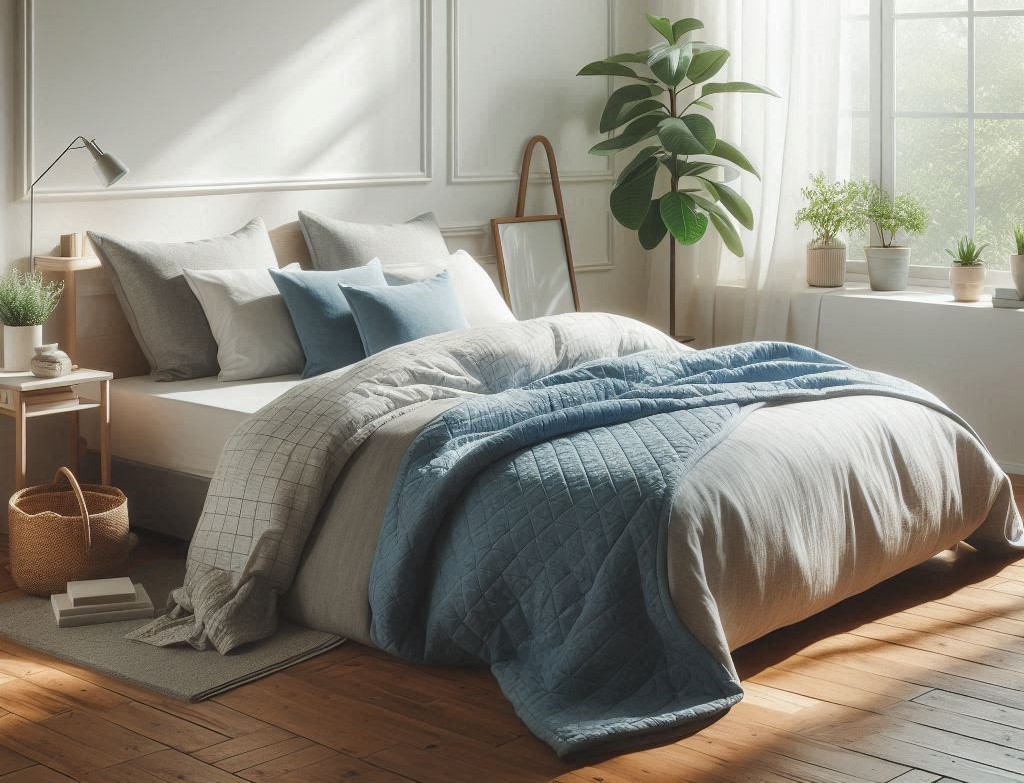When it comes to creating a serene and healthy bedroom environment, controlling dust isn’t just about cleanliness—it’s about improving overall air quality and ensuring a good night’s sleep. We understand how crucial it is to maintain a dust-free bedroom, not only for comfort but also for health reasons such as allergies and respiratory issues. Our experience has shown us the hidden corners and common pitfalls where dust likes to accumulate, and we’re excited to share our insights on tackling this pervasive issue.
We approach dust control systematically, beginning with understanding where dust comes from and how it behaves in a typical bedroom setting. It’s important to recognize that dust isn’t just dirt. It can be composed of pollutants, textile fibers, pet dander, and even skin flakes. This knowledge helps us target our cleaning techniques more effectively, ensuring that we not only remove dust from the surface but also prevent it from recurring as easily.
Join us as we explore strategies for minimizing dust accumulation, recommend products we trust for keeping your bedroom pristine, and provide you with a comprehensive maintenance routine for keeping your sleeping space consistently fresh and clean.
Understanding the Sources of Bedroom Dust
One might think that dust magically appears, but we know better. Dust in the bedroom, and indeed throughout any area of your home, originates from multiple sources. Textiles such as carpets, curtains, and bedding are common culprits, each shedding tiny fibers that contribute to the buildup.
Human skin flakes, pet dander, and even tiny particles brought in from outside add to the mix, creating a concoction of what we recognize as household dust. The ongoing accumulation of these particles forms layers that not only detract from your home’s cleanliness but can also aggravate allergies and respiratory conditions.
To tackle this, our first step is identifying high dust generation zones. Bedding, for example, constantly sheds fibers especially as it wears. Similarly, outside air that flows through windows or under doors brings in dust and pollen, contributing to the layers that settle on surfaces. Recognizing these sources helps us target our cleaning processes, ensuring we address dust right at its origin.
Essential Steps to Minimize Dust Accumulation
In addressing the persistent problem of dust in the bedroom, employing a proactive cleaning strategy is crucial. Start with your bedding: wash sheets, pillowcases, and blankets weekly in hot water to kill dust mites and remove accumulated skin flakes and fibers. For those particularly sensitive to dust, consider encasing mattresses and pillows in dust-proof covers which help contain and reduce the number of particles that become airborne.
Next, focus on floors and surfaces. Using a vacuum with a HEPA filter is essential—not only does it trap finer particles more efficiently than regular vacuums, but it also prevents these from being blown back into the room. Vacuum at least twice a week, and follow up with a damp mop or cloth to pick up any residual dust that the vacuum may have missed.
For hard surfaces, dusting with a damp cloth will capture more particles than a dry duster, which can often just move dust around rather than remove it. By following these steps, we significantly reduce the likelihood of dust accumulating, thus maintaining a fresher, cleaner bedroom environment.
Products and Tools We Recommend for Dust Control
To effectively combat dust in your home, it’s crucial to use the right products and tools. We recommend microfiber cloths as a must-have in your cleaning toolkit. These cloths are designed with special fibers that attract and hold dust particles, rather than merely spreading them around. Additionally, a good quality vacuum cleaner equipped with a HEPA filter can drastically reduce the amount of dust in your home. HEPA filters trap fine particles such as pollen, pet dander, and dust mites, which standard vacuum filters might recirculate into the air.
For those hard-to-reach areas, extendable dusters can be a game-changer. They help you dust ceiling fans, high shelves, and other elevated surfaces without the need for a ladder. Alongside these tools, consider using an air purifier in rooms where dust accumulates quickly. Air purifiers help maintain clean air throughout the home and reduce the load on your other dusting efforts.
Maintaining a Dust-Free Environment Year-Round
Maintaining a dust-free environment requires consistency and attention to detail throughout the year. Change or clean HVAC filters regularly to prevent dust from circulating through your home’s air system. We recommend checking these filters monthly and replacing or cleaning them as needed, depending on their type and your home’s dust levels. Also, embrace the routine of decluttering; fewer objects mean fewer surfaces for dust to settle on, making your cleaning process quicker and more efficient.
Seasonal deep cleans can also make a significant difference. Take advantage of changes in the season to clean areas that aren’t part of your regular cleaning routine, such as behind appliances and inside cupboards. These deeper cleans can remove accumulated dust that regular cleaning might miss, contributing to overall air quality and cleanliness.
At The A Team Cleaning Services, we understand the importance of maintaining a dust-free environment for your comfort and health. If managing home dust feels overwhelming, we are here to help. Our expert team uses high-quality tools and tailored techniques to keep your home refreshingly clean. Contact us today to learn more about our deep house cleaning services in Fremont and how we can assist in creating a cleaner, healthier home for you!

